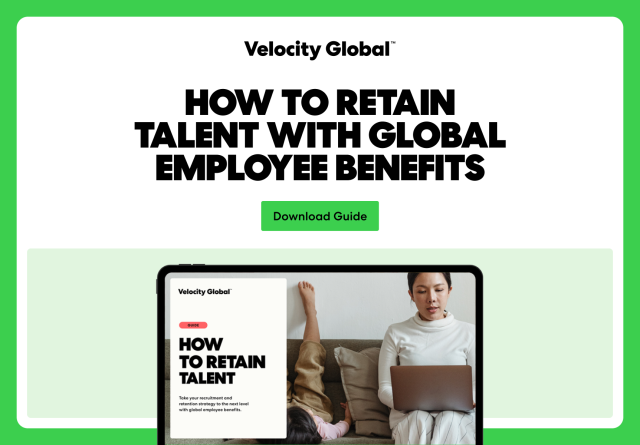It can be said that a business’s greatest asset is its human capital. While many believe that products and services drive revenue, the people who create and provide these goods make them worthwhile.
One aspect of HR management involves implementing effective strategies to mitigate human capital risk. The following fundamentals and tips help organizations protect and optimize their most valuable asset: their workforce.
What is human capital?
Human capital encompasses the collective knowledge, skills, abilities, and experiences individuals bring to an organization. This intangible asset includes everything from educational background and technical expertise to soft skills like communication abilities and leadership qualities that contribute to organizational success.
Involving more than just a workforce’s capacity, human capital embodies the economic value derived from an employee’s complete set of attributes, including intelligence, health, loyalty, and professional judgment. Organizations that recognize the strategic importance of managing human capital understand that these resources directly influence productivity, innovation, and long-term sustainable growth.
What is human capital risk?
Human capital risk includes events and employee behaviors that hinder organizations from meeting their operational, business resiliency, and continuity goals. This risk arises when an enterprise’s investment in human resources might lose value due to the departure of individuals or groups necessary for future success.
Common human capital risks include employee dissatisfaction leading to reduced productivity, costly turnover and attrition, operational misconduct such as fraud or security breaches, workplace safety incidents, and negligent hiring practices.
These risks can result in a significant financial impact through direct losses, regulatory fines, and reputational damage, making it essential for organizations to implement comprehensive risk management strategies.
5 critical areas of human capital risk
Organizations face several critical areas of human capital risk that can substantially impact their operations and success. Anticipating these key risk areas helps businesses develop targeted strategies for mitigation and prevention.
Dissatisfaction
Employee dissatisfaction emerges when workers feel undervalued or underpaid or see limited growth opportunities within their roles. This widespread discontent often leads to decreased productivity, poor customer service, and a negative workplace culture. Left unaddressed, employee dissatisfaction can spread throughout an organization, affecting team dynamics and overall performance.
Attrition
High employee turnover creates substantial operational and financial burdens for organizations. Beyond the direct costs of recruiting and training replacements, attrition disrupts workflow continuity and team dynamics. Organizations experiencing high turnover often struggle with knowledge retention and maintaining consistent service quality.
Corruption
Corruption manifests when employees abuse their positions for personal gain, compromising organizational integrity and assets. This can include fraud, intellectual property theft, or the misuse of company resources. Such misconduct not only creates immediate financial losses but can also lead to long-term reputational damage and regulatory consequences.
Workplace challenges
Workplace incidents and accidents pose significant risks to both employee safety and organizational stability. These events can range from physical injuries to cybersecurity breaches, potentially resulting in liability issues, operational disruptions, and damage to a company’s reputation. Proper safety protocols and disaster response planning are essential for risk mitigation.
Poor hiring or retention
Ineffective hiring and retention practices can introduce significant vulnerabilities into an organization. Hiring unqualified or untrustworthy employees often results in poor performance, increased liability, and potential security risks. Organizations must implement comprehensive screening processes and ongoing performance management to maintain workforce quality and reliability.
The impact of poor human capital risk management
Poor human capital risk management can have severe financial and operational consequences for organizations. When companies fail to effectively manage their human capital risks, they are more exposed to cyber-attacks, regulatory breaches, supply chain disruptions, business interruptions, and reputational damage.
The financial impact is particularly striking—employee turnover alone can cost organizations between one-half to two times the annual salary of a departing employee. This is compounded by the fact that more than half of employees reported actively job hunting or planning to leave their organizations.
Beyond direct costs, inadequate human capital risk management creates cascading effects across organizations. For example, between 2020 and 2022, 200,000 registered nurses left the U.S. healthcare sector, increasing exposure to medical malpractice risks and potential reputational damage.
The gap between risk awareness and preparedness is particularly concerning. While human capital has emerged as a top-four global risk, only 11% of organizations have actually quantified their people-related risks. This disconnect leaves many organizations vulnerable to talent-related disruptions that could significantly impact their operational continuity and competitive position.
6 tips for effectively managing human capital risk
Managing human capital risk requires a strategic, data-driven approach that helps organizations protect their most valuable asset. Here are six essential strategies for effective human capital risk management, starting with the fundamental importance of data collection and analysis.
Identify and collect good data
One area that typically prevents human resources departments from managing risk is a lack of data. The only way to analyze human capital risk is to collect and analyze the right kinds of data. While every business generates reams of data, the problem is finding the appropriate metrics that measure key components of human capital risks.
It’s often advantageous to consider these metrics when measuring risk:
- How will turnover patterns and age demographics impact growth plans?
- Are the company’s development and succession plans working to fill the pipeline with qualified future candidates?
- Is the company retaining its top performers?
- Are certain HR policies, programs, or practices having the desired effect or, perhaps, unintended consequences?
Defining and tracking the right metrics enables organizations to analyze the effectiveness of risk mitigation strategies and make necessary adjustments. Accurate data collection and analysis form the foundation for effective human capital risk management and informed decision-making.
Invest in a talented workforce
Some of the best ways to mitigate these risks are to build a workforce where employees are adequately compensated, engaged with their work, happy with their jobs, and have a clear path for advancement. These positive actions push employees to work harder and be more loyal.
This can be particularly important when recruiting overseas because cultural expectations can vary significantly from region to region. To keep employees in multiple regions happy and mitigate these risks, organizations must manage work expectations to better align with their employees.
Download our global benefits guide to learn how to provide competitive, comprehensive, and compliant benefits packages that improve talent recruitment and retention around the world.

Prioritize diversity, equity, and inclusion
Organizations that prioritize diversity, equity, and inclusion (DEI) initiatives demonstrate stronger financial performance, enhanced innovation, and improved risk management outcomes. A diverse workforce brings varied perspectives, experiences, and problem-solving approaches that strengthen organizational resilience and adaptability.
Effective DEI strategies extend beyond recruitment to encompass retention, advancement opportunities, and inclusive workplace cultures. Organizations should establish clear metrics to track DEI progress, including representation across leadership levels, pay equity analyses, and employee engagement scores across different demographic groups.
Strong DEI practices also help mitigate legal and reputational risks associated with discrimination claims while enhancing the ability to attract and retain top talent. Research shows that companies in the top quartile for ethnic and cultural diversity outperform those in the bottom quartile by 36% in profitability, demonstrating the tangible business value of DEI initiatives.
Ensure compliance with labor laws and ethical standards
Maintaining strict compliance with labor laws and ethical standards protects organizations from legal liability while fostering a culture of trust and accountability. This includes adhering to wage and hour regulations, workplace safety standards, and anti-discrimination laws across all operating jurisdictions.
Organizations must stay current with evolving employment legislation, particularly when operating across multiple countries or regions. Regular compliance audits, updated policy documentation, and comprehensive training programs help identify potential violations before they escalate into significant issues.
Plan ahead
Human capital risk strategies do more than relabel old HR concepts. They help organizations focus on planning ahead for problems to prevent them or enable a swift reaction to mitigate the damage. According to an article by Lowers and Associates, people often wait to plan for a problem until something bad happens. But a crisis leaves no time for a management team to brainstorm solutions.
To plan ahead, analyze the business’s operations using a risk-based approach to identify potential problems. Consider how the five risk areas could affect the company’s operations and make plans to mitigate them before they occur.
Rely on the right partners
Strategic partnerships, particularly with Employer of Record (EOR) providers, are crucial in mitigating human capital risk for organizations operating globally. EOR partnerships offer comprehensive solutions that address complex international workforce challenges.
An experienced EOR provider delivers several key advantages for global workforce management:
- Streamlined global onboarding. An EOR provider accelerates hiring processes through established infrastructure while maintaining consistency across regions. This efficiency reduces administrative burden and ensures smooth employee integration.
- International compliance management. Another EOR provider’s benefit is their compliance expertise. This enables ongoing compliance with local employment laws, tax regulations, and statutory requirements across all operating jurisdictions. Regular monitoring and updates ensure adherence to changing regulations.
- Competitive benefits administration. An EOR provider also designs and manages market-appropriate benefits packages that align with local standards and expectations. This comprehensive approach helps organizations attract and retain top talent globally.
- Local HR expertise. A holistic EOR provider offers on-the-ground support and guidance from experts who understand local employment practices and cultural nuances. These specialists manage day-to-day HR operations while ensuring cultural alignment.
- Risk mitigation. Exposure to employment-related risks is reduced through an EOR provider’s standardized processes and expert oversight. This systematic approach helps organizations navigate complex international employment challenges while maintaining compliance.
By leveraging these partnerships, organizations can focus on core business objectives while limiting exposure to complex international human capital risks.
Mitigate human capital risk when hiring abroad with Velocity Global
Global organizations aiming to minimize human capital risk can leverage Velocity Global’s comprehensive EOR solution. With a presence in 185+ countries backed by legal and HR expertise, Velocity Global streamlines international hiring, ensures compliance with local regulations, and provides essential support for managing a distributed workforce. This complete solution enables organizations to confidently hire and manage talent anywhere in the world while maintaining focus on their core business objectives. Get in touch to learn more.
Topic:
HR Strategies



